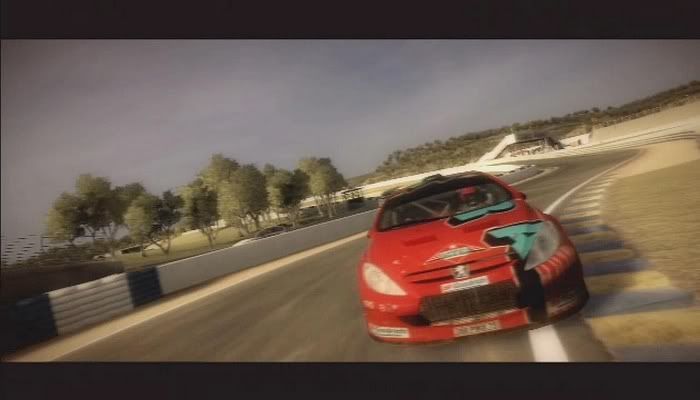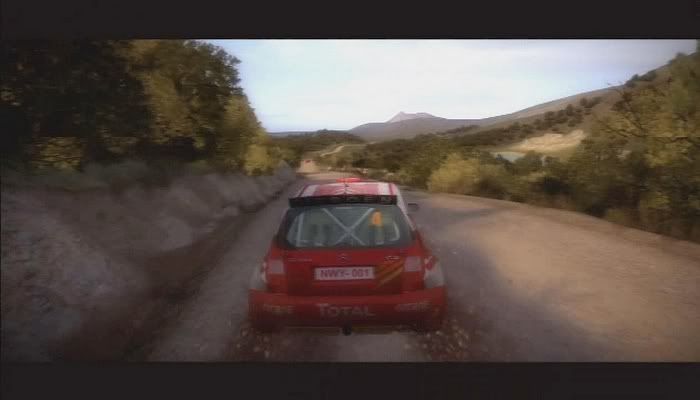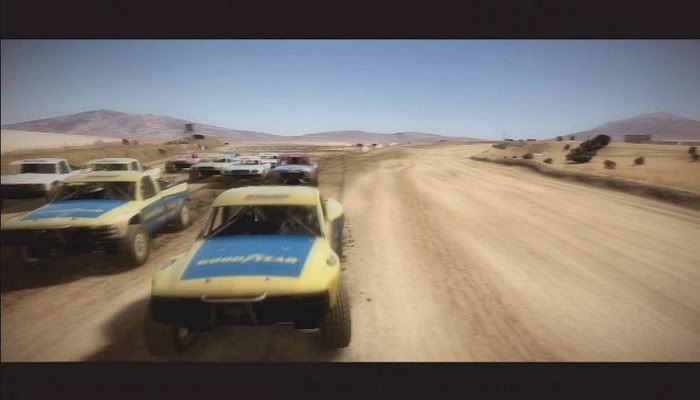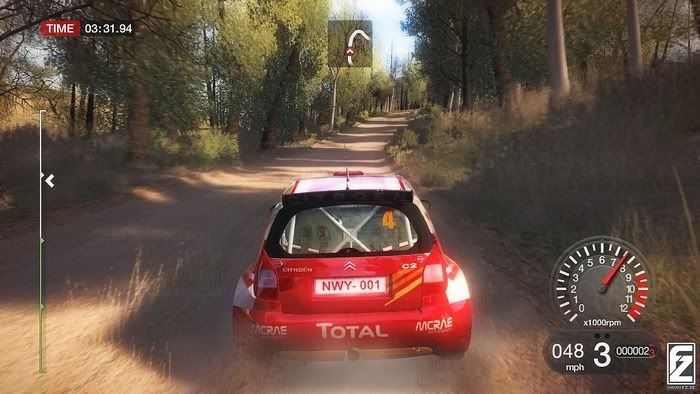You are using an out of date browser. It may not display this or other websites correctly.
You should upgrade or use an alternative browser.
You should upgrade or use an alternative browser.
First Colin McRae: Dirt Preview(Xbox360)
- Thread starter chris100
- Start date
Bigus Dickus
Regular
I doubt that. When you start to consider all the tuning options Gran Turismo offered without even going as far to how each of the hundreds of different cars differentiated themselves, one can only wonder how many parameters their physics engine had to handle. Burnout is a simple game in comparison with more or less scripted damage and few cars with no tuning potential that would differenciate each car. Then there's tire wear, surface grip (rally mode, wet tracks etc) that didn't exist at all in Burnout games. Or did that change in the later ones (only played Burnout 2 and 3)?
Just keep in mind that there is a big difference between trying to accurately model realistic physics, and add "physics effects" that give the perception of accurate modeling without having to worry about being accurate.
For example, suspension dive under braking:
In a simplistic emulation you could multiply the mass of the car, stiffness of the front springs, and deceleration to produce a "dive number" that can be used as a multiplier for visual effect (how far the car appears to dive) and physics effect (weight load increase on front tires and decrease on rear for handling purposes). The effect, both visual and how the car handles, would vary with cars and with suspension modifications, and would 'reasonably approximate' the desired effect. Most people wouldn't know if it was accurate or not because of a lack of reference point. Three variables, simple calculation and application.
Trying to do it "right"? Mass isn't good enough - you need the CG. Spring stiffness isn't good enough - you need to know whether the spring is linear or not and whether it is already compressed or extended due to road undulations. You also need to track the transfer of force correctly, requiring knowledge of the car's wheelbase and suspension geometry (think several lever arms here). Making a turn at the same time? Then wheel width and anti-roll geometry become equally important to realistic calculation. And if you're calculating using a realistic model, it will require damper calculation to control oscillation, which is similar to the process above but using velocity instead of displacements. And finally, the tire will deform under the changing load, meaning tire size and pressure determine how much tire spring contributes to the dive effect and how the tire and road surface react under the resultant load, so you can't simply apply a "load factor" to the grip parameter in your "physics engine." You would have to at least reasonably approximate the tire deformation (should be fine for this part, but still requires knowing tire rolling diameter, wheel diameter, width, tire type, pressure, and some fudged equation to approximate the developed spring rate and deformation) so that you could estimate the contact patch size. That, because brake dive provides a different grip increase in dry weather (where shearing force dominates, which is controlled by contact patch size) and wet weather (where friction force dominates, which is controlled by contact force magnitude). Which means your engine has to be constantly calculating proper contact force and patch size to know which is dominating at any given time (say you run from asphalt to grass, for instance, or dry to wet road surface, and how wet matters) and applying that correctly to the handling model (instead of just fudging it and having a "wet" and "dry" multiplier for "grip") for any of the above to have a realistic effect.
That's maybe two dozen variables, requiring similar fidelity in many other parts of your physics engine, to "accurately" approximate the effect of brake dive.
But would you really notice the difference between that and the short hand fudging? Both would make the car dive visually and could affect grip in gameplay. Both effects would be different for heavier and lighter cars, and for different suspension settings. Ultimately, the difference would come down to a grip vs. deceleration curve... and both methods would produce curves that at least had the right slope and are in the right ballpark. Would you notice that one curve didn't change because you swapped tires? Or because you were turning at the same time? Or just that it was too steep or shallow of a curve or of the wrong order polynomial in straight ahead braking? Probably not.
Personally, I don't know how far physics modeling in racers goes. The hype on FM2 makes one think it is farily extensive, but in reality it could still be a lot of "complex" fudges.
DuckThor Evil
Legend
The video looks ok on my monitor, but on my 61" tv not so much...
I'm sure the framerate will be ok in the final version.
I'm sure the framerate will be ok in the final version.
Megadrive1988
Veteran
gametrailers has SD and HD versions
HD
http://www.gametrailers.com/player.php?id=18186&type=mov&pl=game
http://www.gametrailers.com/player.php?id=18186&type=wmv&pl=game
SD
http://www.gametrailers.com/player.php?id=18185&type=mov&pl=game
http://www.gametrailers.com/player.php?id=18185&type=wmv&pl=game
dispite the bad video quality, the game looks better than I expected dispite the sucky framerate.
HD
http://www.gametrailers.com/player.php?id=18186&type=mov&pl=game
http://www.gametrailers.com/player.php?id=18186&type=wmv&pl=game
SD
http://www.gametrailers.com/player.php?id=18185&type=mov&pl=game
http://www.gametrailers.com/player.php?id=18185&type=wmv&pl=game
dispite the bad video quality, the game looks better than I expected dispite the sucky framerate.
Last edited by a moderator:
Took some frame grabs of the latest video, the shots have image sharpening added and are made brighter to easier see details. Might I add that the game shure looks great!
( http://i176.photobucket.com/albums/w193/NebulasPhotoPocket/MC4-BIG.jpg )

( http://i176.photobucket.com/albums/w193/NebulasPhotoPocket/MC2-BIG.jpg )

( http://i176.photobucket.com/albums/w193/NebulasPhotoPocket/MC3-BIG.jpg )

( http://i176.photobucket.com/albums/w193/NebulasPhotoPocket/MC5-BIG.jpg )

( http://i176.photobucket.com/albums/w193/NebulasPhotoPocket/MC4-BIG.jpg )

( http://i176.photobucket.com/albums/w193/NebulasPhotoPocket/MC2-BIG.jpg )

( http://i176.photobucket.com/albums/w193/NebulasPhotoPocket/MC3-BIG.jpg )

( http://i176.photobucket.com/albums/w193/NebulasPhotoPocket/MC5-BIG.jpg )

Last edited by a moderator:
here's a link to french site that has previewed the game.
http://www.jeuxvideo.fr/article-colin-mcrae-dirt-6557-0-0.html
there is 8 video pretty low res videos that at least give a good shot of the different environments available in the game..
The reviewer stated that there is still big slowdown in this version of the game.
Anyway looks good even at that res
http://www.jeuxvideo.fr/article-colin-mcrae-dirt-6557-0-0.html
there is 8 video pretty low res videos that at least give a good shot of the different environments available in the game..
The reviewer stated that there is still big slowdown in this version of the game.
Anyway looks good even at that res
"Nerve-Damage"
Regular
I guess some of you folks learned, by now, to never trust "screenshots" from Codemasters.
Remember the good ol' days when Codemasters released PC Toca screenshots that looked like CG. Never looked like that ingame though, not by a lightyear shot.
New Pics
Man the graphics have slid in this game. What the hell happened to all the CGish/photorealistic graphics and effects from the original photos?
Still looks good, but yeah some downgrade from the initial ss. But the screenshots from the video above looks better (no abuse of DoF/Blur).
http://www.fz.se/bildarkiv/image.php?id=44277
http://www.fz.se/bildarkiv/image.php?id=44281
http://www.fz.se/bildarkiv/image.php?id=44283
Last edited by a moderator:
"Nerve-Damage"
Regular
Still looks good, but yeah some downgrade from the initial ss. But the screenshots from the video above looks better (no abuse of DoF/Blur).
http://www.fz.se/bildarkiv/image.php?id=44277
http://www.fz.se/bildarkiv/image.php?id=44281
http://www.fz.se/bildarkiv/image.php?id=44283
Downgrade doesn't even begin to cover it.
(old screens)





Last edited by a moderator:
New car damage video show
http://www.gametrailers.com/umwatcher.php?id=58786
http://www.gametrailers.com/umwatcher.php?id=58786
Fu3lFr3nzy
Regular
Judging by the screens, so this game basically got the "motorstorm" effect? (from cg to real time)
Judging by the screens, so this game basically got the "motorstorm" effect? (from cg to real time)
No, motorstorm is much closer to the CG than this .
No, motorstorm is much closer to the CG than this .
The first ss of Dirt looks to have much better lightning and use of DoF and sharper IQ. Neverthless Motorstorm is lightyears away from the CG. I would say that Dirt is closer to it's target render than Motorstorm is...
From FZ.

Last edited by a moderator:
Ok, I think people are slightly jumping the gun here.
The only discernible difference between the screens is really the more dramatic camera angles in the first bunch of screens - with all the effects turned up so it looks shiny. (HUGE DoF, Massive HDi clamping, and bloom coming out of every orifice)
Now they have shown use more 'gameplay' shots, still with the same effects, just dialled back so the game is more playable. Sure the high contrast looks good in screens with the DoF effects, but that's not a real-life, that's a pseudo-camera lens effect.
I really think people are picking at something that doesn't need to be picked at with the graphics. What I'm interested in, is have they kept that rubbish single point physics system they've had since CMR1?
The only discernible difference between the screens is really the more dramatic camera angles in the first bunch of screens - with all the effects turned up so it looks shiny. (HUGE DoF, Massive HDi clamping, and bloom coming out of every orifice)
Now they have shown use more 'gameplay' shots, still with the same effects, just dialled back so the game is more playable. Sure the high contrast looks good in screens with the DoF effects, but that's not a real-life, that's a pseudo-camera lens effect.
I really think people are picking at something that doesn't need to be picked at with the graphics. What I'm interested in, is have they kept that rubbish single point physics system they've had since CMR1?
iceberg187
Regular
I'm surprised the cars are only 20k polys. Makes you wonder why it is running 30fps then. Then again, there does appear to be a lot going on as far as graphical tricks.
The first ss of Dirt looks to have much better lightning and use of DoF and sharper IQ. Neverthless Motorstorm is lightyears away from the CG. I would say that Dirt is closer to it's target render than Motorstorm is...
From FZ.

actually the first shot looked kinda blurry to me, the car lacks texture or is it just the bad capture. and i dont c how its lighting is so much better than MS's. either versions are pretty close to their cg counterparts at times. i say MS has the best mud effect and tracks and the damage so far.
what DIRT really stands out is the foliage and softer shadows than MS. although i dont know if dirt has self-shadows applied or not.
Similar threads
- Replies
- 32
- Views
- 9K
